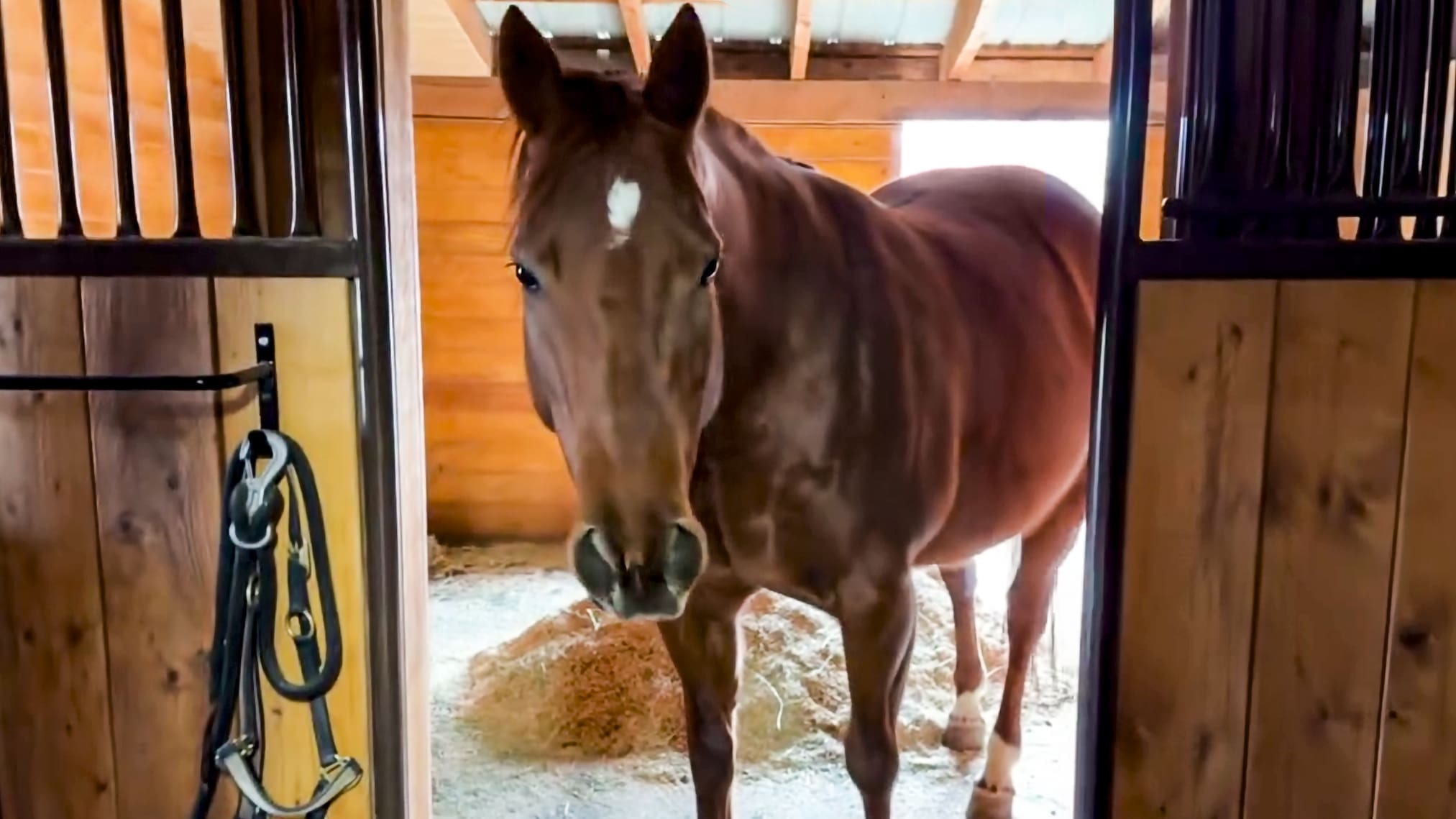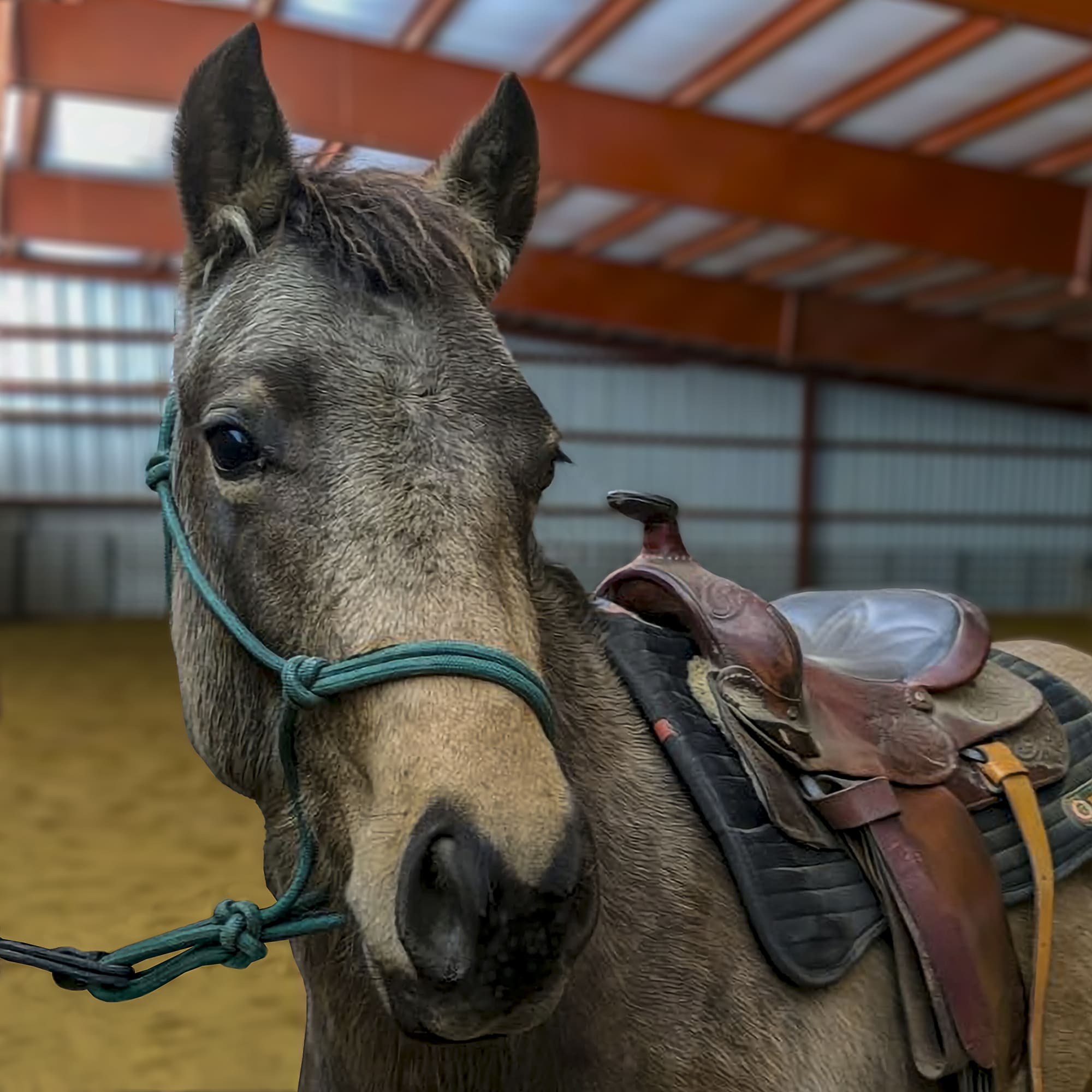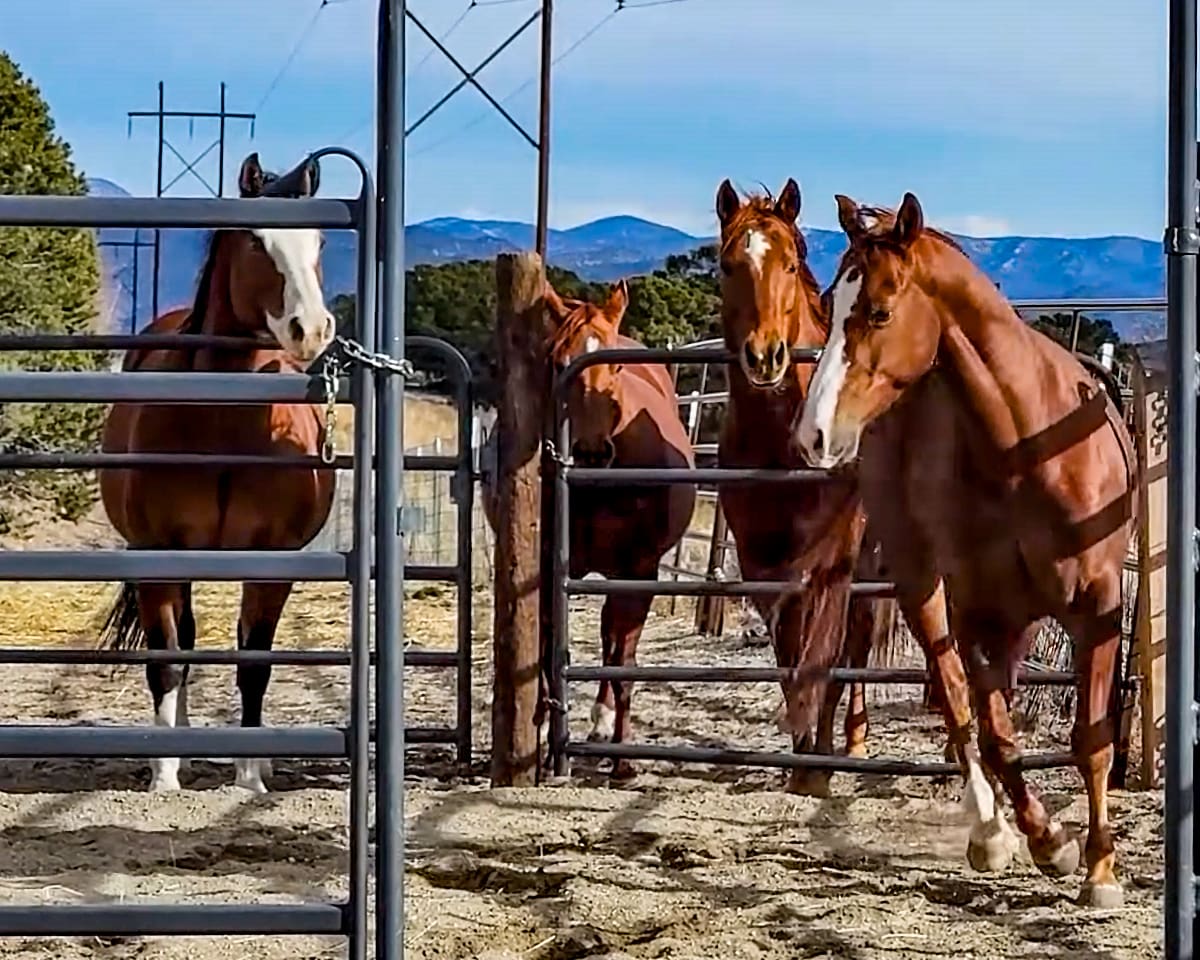Dear Julie,
I’ve been taking riding lessons every week for a few months (I used to ride when I was younger). The school I go to is very good—your horses are very fit and mostly well behaved. My class of 4-5 riders is working in an arena. In the last few weeks, I’ve noticed that the horses are getting a bit excitable and fast. I can control my horse at the beginning, but when it comes to cantering my horse is difficult to control. He raises his neck and is ready to take off—especially when other horses are excited. I am reluctant to canter at all now. I feel nervous and out of control and my horse knows it. What’s the best way control my horse at the canter?
Signed, Speed No More
Dear Speed No More,
Feeling out of control is no fun. I believe it’s important to give all riders the tools they need to feel in control and capable of stopping at any speed. I teach riders two get-in-control and stopping techniques–one for everyday use and one that’s purely for emergencies. Let’s learn about the one-rein stop and the pulley rein. You’ll need to know both—and when it’s time to use each.
Let’s first make sure you know what to do in an all-out emergency. The pulley rein is the emergency stop to use. It’s a rather abrupt motion that will stop any horse (when done correctly). When you apply this rein aid, you’ll apply a significant amount of leverage to your horse’s mouth. I don’t want riders to pull on their horses’ mouths often—that’s why this cue is used only in an emergency. To make sure the cue isn’t abused, I usually only teach the technique at jumping clinics (when riders are on open courses where horses often get strong and can easily run off) and at fear-management clinics (when you need the confidence to know you can stop—come Hell or high water).
Executing the Pulley Rein
As you practice this move, keep in mind you’ll only use your ultimate strength when there’s an actual emergency. In practice, you’ll only use a portion of your available strength. Begin by shortening one rein (let’s choose the left for teaching purposes) so there’s tight contact with your horse’s mouth. Keeping the rein pulled tightly, center and brace your left hand on your horse’s neck, at your horse’s midline. Push your knuckles—still working with your left hand–into your horse’s neck. With your right hand, slide your fingers down the right rein, grasp and pull straight back and up. In a real emergency, you’ll use all your weight to create leverage. Your left rein is locked in place, preventing your horse’s head from turning. The pull on the second rein creates significant pressure and to avoid the constant pressure, your horse will choose to stop.
When executed correctly, you can stop a runaway horse on a dime by using the pulley rein. This is far preferable to pulling the out-of-control horse into a circle–which may cause him to lose his footing and fall down. The pulley rein technique requires some practice. It can also be very useful for slowing down a big, strong horse—use a little of the pulley action every few strides then release (similar to a half-halt).
One of the very worst things you can do, when trying to slow down or stop a horse, is pull back on both reins at the same time. This will almost always make your horse stiffen its neck and lock its jaw and may also pull you up and out of the saddle–or even right over your horse’s ears. Pulling on both reins continuously will often cause your horse to “run through the bridle,” and the harder you pull the faster he goes. Horses are much more responsive when you use the reins alternately. Alternate action is far more likely to keep your horse soft in the neck and flexing in the poll.
When to One-Rein Stop
The other technique I teach for better control is a one-rein stop—also known as disengagement of the hindquarters. You must train your horse (while working at a walk then a trot) to know what response you’re requesting before using this move at high speeds or when he seems out of control. To execute the one-rein stop, pick up one rein and lift it up toward your belly button or toward your opposite shoulder (it’s an upward, diagonal pull on the rein). It’s critical that the other rein is completely loose.
This rein aid will turn your horse’s nose up and toward you; as he arcs throughout the length of his body, the turn will cause him to disengage, or cross his hind legs. You’ll be able to feel your horse’s hips bend as he begins to disengage his hindquarters.
Disengagement will help you control your horse in two ways: speed and subordinance. When your horse crosses his hind legs in disengagement, it ceases all forward motion. As you pick up slowly on the one rein, wait until you feel your horse’s back and hip get crooked (that’s when he’s crossing his hind legs) then release the rein suddenly and completely and he should stop. If not, just reapply the aid but be sure to release as soon as you feel your horse even begin to slow down. Since crossing the hind legs takes away your horse’s ability for forward motion (or flight), it puts him in a frame of mind to have to be submissive. Fleeing is not an option.
A few more tips about the one-rein stop: Make sure to lift your rein slowly and steadily and be ready for an instantaneous release when you feel your horse’s momentum affected. You should alternate between the right and left reins, or the inside and outside rein, so you’re not affecting just one side of your horse or getting him into a habit. The one-rein stop will cause your horse to turn at first, but with practice and a timely release, he’ll go straight and stop. Practice the one-rein stop at walk and trot until your horse stops when you just begin to lift one hand–before much pressure is actually applied to his mouth.
Of course, you should be using your seat aid as well; for more information on how to use your aids effectively, see the article on “Gears of the Seat” on www.juliegoodnight.com and check out volume two in my riding series, Communication and Control from the Saddle.
Enjoy the ride!




No comment yet, add your voice below!